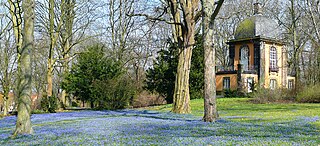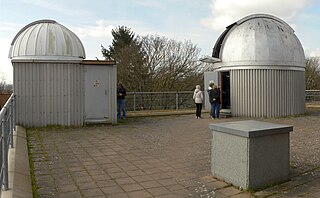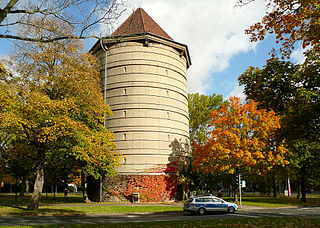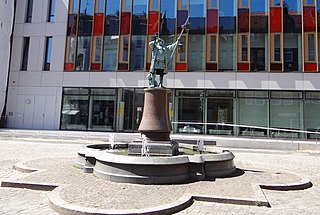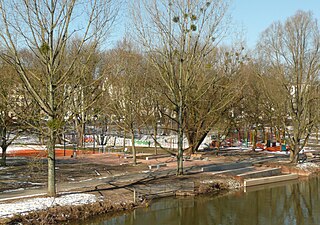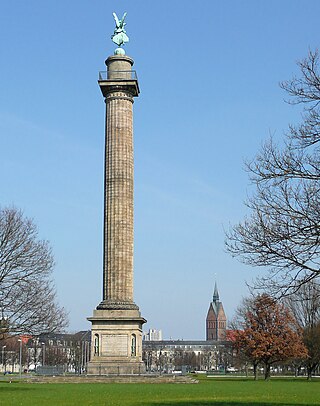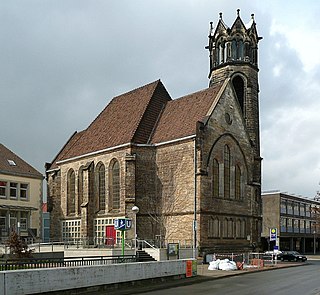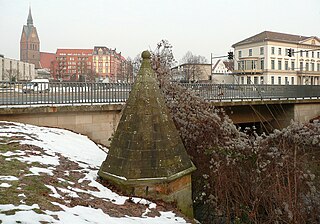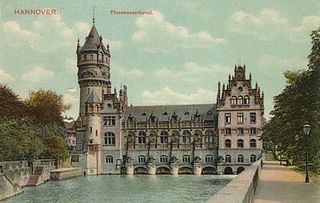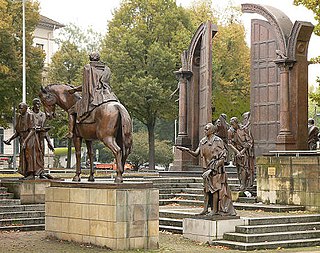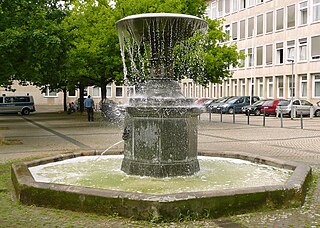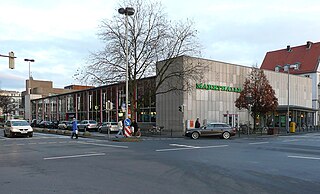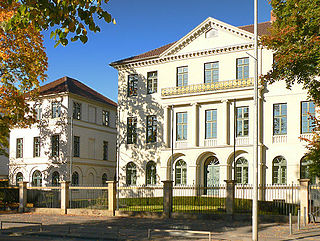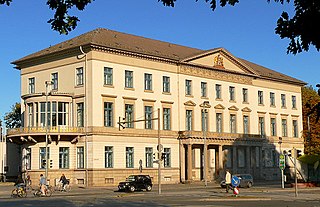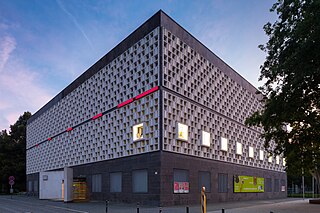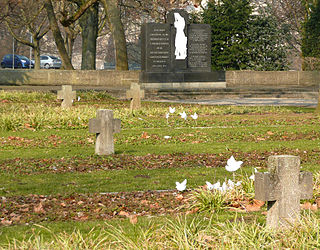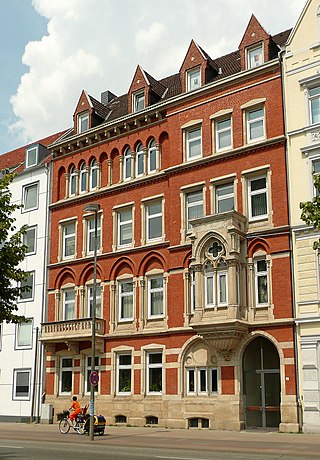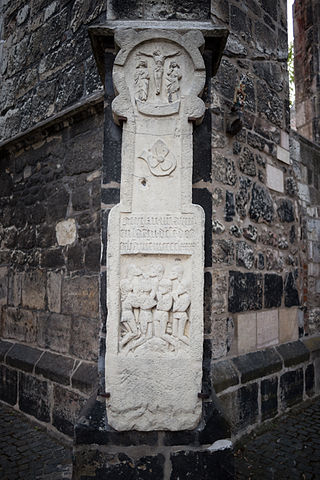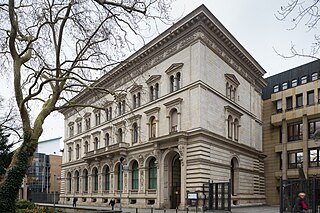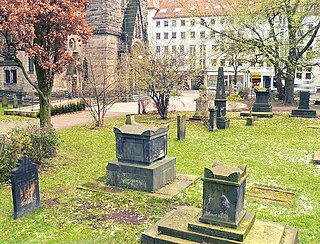Self-guided Sightseeing Tour #6 in Hanover, Germany
Legend
Tour Facts
10.3 km
161 m
Experience Hanover in Germany in a whole new way with our free self-guided sightseeing tour. This site not only offers you practical information and insider tips, but also a rich variety of activities and sights you shouldn't miss. Whether you love art and culture, want to explore historical sites or simply want to experience the vibrant atmosphere of a lively city - you'll find everything you need for your personal adventure here.
Activities in HanoverIndividual Sights in HanoverSight 1: Stadtfriedhof Am Lindener Berge
The Lindener Berg district cemetery is a cemetery laid out at the time of the Kingdom of Hanover, which today represents a listed park in Hanover. Its blue star (Scilla) bloom in March attracts thousands of visitors every year.
Sight 2: Quartier e.V.
The Kitchen Garden Pavilion in Hanover is a listed pavilion and former pleasure house from the time of the Electorate of Hanover. The building, built at the end of the 1740s, is one of the architectural treasures of the capital of Lower Saxony. Under the care of the Quartier e.V. association, the building on Lindener Berg is now used as a viewing and exhibition space, especially on the history of the former industrial city of Linden. A permanent exhibition also contains pieces from the fossil collection of the geologist and paleontologist Carl Struckmann.
Sight 3: Lindener Berg
The Lindener Berg is an 89 m high elevation in the Hanover districts of Linden-Mitte and Linden-Süd, which rises about 35 metres above the surrounding urban area.
Sight 4: Lindener Mühle
The Linden Windmill in Hanover, also known as the Linden Tower, is a listed former windmill on the Lindener Berg, which is built on top of a watchtower built in the Middle Ages. It is the oldest surviving building in Linden.
Sight 5: Volkssternwarte Hannover
The Volkssternwarte Hannover is a public observatory operated by the non-profit association Volkssternwarte Geschwister Herschel Hannover e. V. It is located in Hanover on the 89 m high Lindener Berg and there on the roof terrace of the water reservoir on the Lindener Berg, which was completed in 1878.
Sight 6: Egestorffdenkmal
Since 1935, the Egestorff Monument in Hanover has commemorated Johann Egestorff, who created the basis for the industrialization of the former village of Linden and the city of Hanover with his companies. The monument stands in the Linden-Süd district, below the former eastern quarries of the Lindener Berg, west of the street Am Spielfelde, near the Linden stadium.
Sight 7: Bunker am Deisterplatz
The bunker at Deisterplatz in Hanover is the only under around 50 in Hanover during the Second World War, the air -raid shelter built, which was listed. It was built in the early 1940s as a round bunker on the then border of the von Alter-Park and in sight of Hanomag. Today it is located in the middle of the busy traffic circle of Deisterplatz in Linden.
Sight 8: Von-Alten-Garten
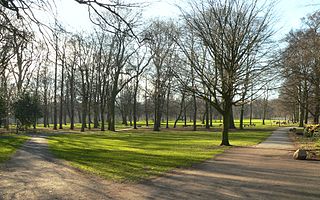
The Von-Alten-Garten is a 7.5-hectare public park in Hanover, Germany, located in the Linden-Mitte district. It is located at the foot of the Lindener Berg directly on the Westschnellweg.
Sight 9: Nachtwächter Brunnen
The Night Watchman Fountain in Hanover is a listed fountain system based on a model by the sculptor Hans Dammann in what is now the Hanover district of Linden-Mitte. The plant, donated by citizens of the formerly independent industrial town of Linden in 1896, is part of the original equipment of Linden's market square – "[...] since that year, a weekly market has been held here".
Sight 10: St. Godehard
St. Godehard is a Catholic parish church in the Hanover district of Linden-Mitte. It was built between 1873 and 1874 according to plans by the architect Christoph Hehl and consecrated on 4 October 1874 by Bishop Wilhelm Sommerwerck. It bears the name of St. Godehard, who was bishop of Hildesheim in the 11th century. Her parish of the same name belongs to the Hanover deanery of the Diocese of Hildesheim.
Sight 11: Erlöserkirche
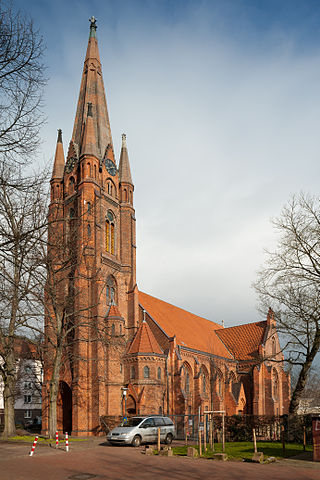
The Church of the Redeemer is an Evangelical Lutheran church in Hanover, which until 1943 bore the name Zionskirche. It is located in the Linden-Süd district.
Sight 12: Stadtteilpark Linden-Süd
The Linden-Süd district park in Hanover is a park on the banks of the Ihme and at the same time the largest green space in the Linden-Süd district of Hanover. Since September 2016, a 2.6-hectare multi-generational area designed with sports and leisure facilities has been created on a previously overgrown area between the Legion Bridge and the area behind the former dermatological clinic with citizen participation.
Sight 13: Mahnmal zur Erinnerung an jüdisches Leben in der Ohestraße
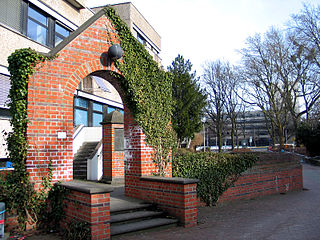
The memorial to commemorate Jewish life in Ohestraße in Hanover was designed by students of the local vocational school center. It commemorates the crimes committed during the National Socialist era to destroy Jewish life in Hanover. The location of the memorial, which was erected on the site of the former "Jewish Education Center", is Ohestraße 8 near Waterlooplatz and the Ihme in the Calenberger Neustadt district.
Wikipedia: Mahnmal zur Erinnerung an jüdisches Leben in der Ohestraße (DE)
Sight 14: Waterloo Column
The Waterloo Column is a 46.31-metre-high Victory Column in the Hanover district of Calenberger Neustadt. It was built on Waterlooplatz between 1825 and 1832 according to a design by Georg Ludwig Friedrich Laves. It is crowned with a statue of Victoria, the goddess of victory, derived from Roman mythology. Its style is based on classical antiquity and is based on the Doric column order.
Sight 15: Waterlooplatz
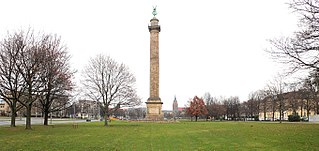
Waterlooplatz in Hanover is a four-hectare lawn in the Calenberger Neustadt district. The Waterloo Column stands on the square. The square and column were built in the 19th century to commemorate the Battle of Waterloo. While the square originally surrounded a barracks area when it was built in the first half of the 19th century, it is now located in the middle of the government and administrative district of the Lower Saxony state capital.
Sight 16: Villa Kaulbach
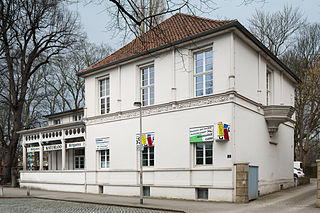
The Villa Kaulbach in Hanover is a listed villa that was built in the 19th century as a residence for the royal Hanoverian court painter Friedrich Kaulbach. The location of the ensemble of residential building and studio, which quickly developed into a centre of attraction and performance venue for numerous artists from Germany and abroad, is Waterloostraße 1 at Waterlooplatz in Calenberg's Neustadt district.
Sight 17: Reformed Church
The Reformed Church is a Protestant Reformed church in the Hanover district of Calenberger Neustadt. The congregation belongs to the Evangelical Reformed Church.
Wikipedia: Reformierte Kirche (Hannover) (DE), Heritage Website
Sight 18: Sieltürmchen
The Sieltürmchen in Hanover is the only visible remnant of the hydraulic engineering facilities of Hanover's former city fortifications as a sluice marker with its approximately 20-metre-long water bar. The location of the listed complex from the 16th century is Culemannstraße on the west bank of the Leine at the southern end of the bridge to Friedrichswall.
Sight 19: Flusswasserkunst
The Flusswasserkunst in Hanover was a castle-like waterworks on the main arm of the Leine built in 1895 in the Neo-Renaissance style and demolished in 1963/64. The building rose at the level of the Friederikenbrücke across the Leineschloss. Since the founding of the Hannoversche Stadtbaukultur e.V. association in 2008, there have been plans to rebuild the important technical structure, especially since the urban development framework plan of Hannover City 2020 + provides for numerous changes around the former construction site.
Sight 20: Göttinger Seven
The monument to the Göttingen Seven in Hanover commemorates an important event in German constitutional history. It honours seven personalities from Lower Saxony's history of the 19th century, the so-called Göttingen Seven.
Sight 21: Schloßbrunnen
The Schlossbrunnen in Hanover is located on Hannah-Arendt-Platz opposite the Leineschloss. It is the oldest surviving fountain in the city. The fountain, designed in the style of classicism, was only erected here in 1955 after several implementations.
Sight 22: Market Hall
Get Ticket*The Markthalle Hannover is a market hall in Hanover, which was put into operation in 1954 and is now popularly known as the belly of Hanover. The market hall is located opposite the Old Town Hall on the edge of the old town. The predecessor building, built here in 1892, was largely destroyed in the Second World War during the air raids on Hanover in 1943 and later demolished.
Sight 23: Laves House
The architect, urban planner and civil engineer Georg Ludwig Friedrich Laves (1788–1864) had the Laveshaus at Friedrichswall 5 in Hanover built as his own residence from 1822 to 1824 and lived in it until the end of his life. Laves had been active as court architect of the Kingdom of Hanover since 1814 and was a representative of classicism.
Sight 24: Wangenheim Palace
Wangenheim Palace is a building in the Mitte district of Hanover, the capital of Lower Saxony, Germany. From 1863 to 1913, it was the town hall and seat of the city's administration. Today it is the seat of the Lower Saxon Ministry of Economic Affairs.
Sight 25: BUSSTOPS: Futuristisches grünes Luft-Boot
BUSSTOPS in Hanover is an art project with originally twelve half-open bus shelters for trams and city buses of the üstra. It was part of a project on art in public space between 1990 and 1994 and was created on the initiative of the Lower Saxony Foundation in cooperation with üstra and Toto-Lotto Niedersachsen. The design project was carried out by internationally renowned architects and designers. The task for the artists was to create art as an extraordinary part of an ordinary service.
Sight 26: Museum August Kestner
The August Kestner Museum, previously Kestner-Museum, is a museum in Hanover, Germany. Founded in 1889, the museum was renamed in December 2007 to avoid confusion with the Kestnergesellschaft, a local art gallery.
Sight 27: Maschpark
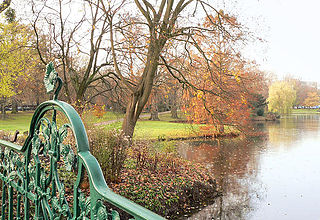
The Maschpark in Hanover's Mitte district is a 10-hectare park south of the old town. It was built around 1900 and was the first municipal park in Hanover. The complex has not changed its original form and is a testimony to German garden art at the end of the 19th century. In the north, the Maschpark is bordered by the Friedrichswall. Between Maschteich and Friedrichswall, the New Town Hall was completed in 1913.
Sight 28: Julius Trip

The Trip fountain near Culemannstraße in Hanover's Maschpark is now a monument to the city's horticultural director Julius Trip. As a symbol of artistic horticulture, the four figures carved from shell limestone, two female and two male, also stand as allegories for trees, bushes, meadows and flowers.
Sight 29: Ehrenfriedhof am Maschsee-Nordufer
The Cemetery of Honour on the north shore of the Maschsee in Hanover is a listed cemetery created in 1945 in honour of a total of 526 prisoners of war and concentration camp prisoners of various nationalities, including 154 citizens of the former Soviet Union, who were murdered on 6 April 1945 by members of the Gestapo headquarters in Hanover. While these crimes committed by the Nazis at the end of the war were intended to cover up injustice and cruelty, the creation of the cemetery of honour on the Arthur-Menge-Ufer on the north shore of the Maschsee was deliberately chosen as a central inner-city location behind the New Town Hall for commemoration.
Sight 30: Sprengel Museum

Sprengel Museum is a museum of modern art in Hanover, Lower Saxony, holding one of the most significant collections of modern art in Germany. It is located in a building situated adjacent to the Masch Lake approximately 150 metres (490 ft) south of the state museum. The museum opened in 1979, and the building, designed by Peter and Ursula Trint and Dieter Quast, was extended in 1992.
Sight 31: Steinkistengrab von Anderlingen
The stone box of Anderlingen is the most famous stone box in Germany, which was built about 3,400 years ago in the early Bronze Age. It was found in 1907 in a hill near Anderlingen in the district of Rotenburg (Wümme) and translocated to Hanover.
Sight 32: Klaus-Bahlsen-Brunnen
The Klaus Bahlsen Fountain is located on Trammplatz in front of the New Town Hall in Hanover. It was designed by Ludger Gerdes in 1996. It is a gift from the Rut and Klaus Bahlsen Foundation to the city.
Sight 33: Wunder-Haus
The Wunder-Haus is a residential and commercial building built in the 19th century at Friedrichswall 17 opposite the New Town Hall in Hanover. It is a listed building and is named after its builder, the photographer Karl Friedrich Wunder.
Sight 34: KUBUS Gallery
The Städtische Galerie KUBUS is a gallery on Theodor-Lessing-Platz in Hanover, Germany.
Sight 35: Spartan Stone
The Seven Men Stone, also known as the Tombstone of the Seven Men or Spartan Stone, is a cross stone at the Aegidienkirche in Hanover, which depicts seven praying men. It is intended to remind us of the legend of "Hanover's Spartans", who are said to have been burned in 1480 during an attack on the Döhren tower together with the tower. The Siebenmännerstein used to be one of the seven landmarks of Hanover that every wandering craftsman had to know.
Sight 36: City Wall
The city fortifications of Hanover were a system of defensive fortifications of the city of Hanover in the period from about 1200 to 1800. The city fortifications, which were built in the Middle Ages, enclosed the city at that time, today's old town. It included a city wall built around 1300 with wall and gate towers as well as city gates, of which hardly any remains remain. Of the Hanoverian Landwehr, which was located in front of the city, ditches, ramparts and watchtowers still bear witness. Almost the highest level of development of the city fortifications was reached at the beginning of the 17th century as a bastion fortification based on the Dutch model. In 1646, the Calenberg Neustadt was included in the Sternschanzen-shaped complex as an upstream, new district. Reactivated again in the Seven Years' War until 1763, the demolition of the fortifications began immediately afterwards due to the lack of military value and to gain space for new urban planning projects.
Sight 37: Deutsche Bundesbank
The Bundesbank's Hanover branch at Georgsplatz 5 is a branch of the Deutsche Bundesbank in the capital of Lower Saxony. In particular, the listed part of the former Reichsbank in Hanover, built at the end of the 19th century, now dominates the west side of Georgsplatz.
Sight 38: Große Kugelform
The Large Spherical Form by the sculptor Karl Hartung in Hanover is considered one of the first abstract sculptures in Germany to be erected as art in public space in the course of reconstruction. The sculpture was dedicated to divided Germany in agreement with the artist and stands as a symbol of the desire for reunification at the time. The location of the 189 cm high sculpture made of shell limestone is today on the corner of Friedrichswall and Georgswall near Aegidientorplatz.
Sight 39: Theater am Aegi
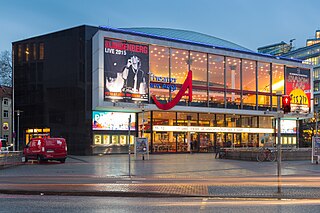
The Theater am Aegi is an event venue on Aegidientorplatz square in Hannover, the capital of Lower Saxony, Germany. Like the square, it is often referred to as Aegi. The building was opened in 1953 mainly as a cinema, with a versatile stage also for other performances. It has been a Gastspieltheater for local and touring companies, without its own personnel. After a fire, it was rebuilt as a theatre only, opened in 1967, and then mainly as a venue for drama performances of the state-run Staatstheater Hannover. After a new theatre was built for that company in 1992, Theater am Aegi returned to its traditional role of a venue for various events, including congress, private functions and representation of the city.
Sight 40: Gartenfriedhof
The Garden Cemetery is a cemetery in Hanover, Germany. It was created in 1741 and is located by the Garden Church built in 1749. The cemetery and the church are both named after the garden parish outside the former parish city walls in front of Aegidien Gate. The cemetery, which contains a number of classicising grave markers from the first half of the nineteenth century, was closed in 1864 with the establishment of the Stadtfriedhof Engesohde. Today it forms a park in the middle of inner city Hanover. The graves of Charlotte Buff, the astronomer Caroline Herschel and the painter Johann Heinrich Ramberg are located here. The Gartenfriedhof lies on Marienstraße between Warmbüchenstraße and Arnswaldtstraße.
Sight 41: Gartenkirche St. Marien
The Garden Church of St. Mary is the church of the Evangelical Lutheran Garden Church congregation in the Warmbüchenviertel in the Hanover district of Mitte. It is located in Marienstraße in the middle of the garden cemetery with classicist grave monuments from the 19th century.
Wikipedia: Gartenkirche St. Marien (DE), Website, Facebook, Heritage Website
Share
How likely are you to recommend us?
Disclaimer Please be aware of your surroundings and do not enter private property. We are not liable for any damages that occur during the tours.
GPX-Download For navigation apps and GPS devices you can download the tour as a GPX file.

